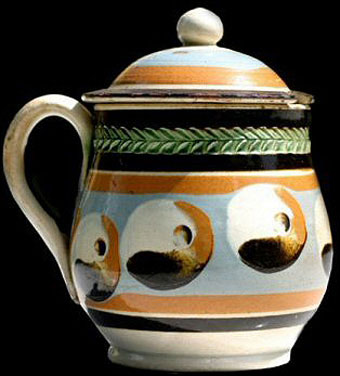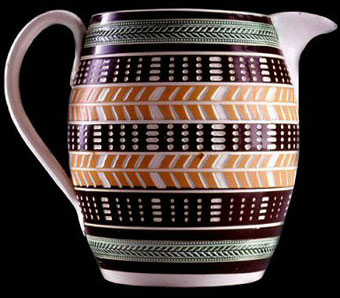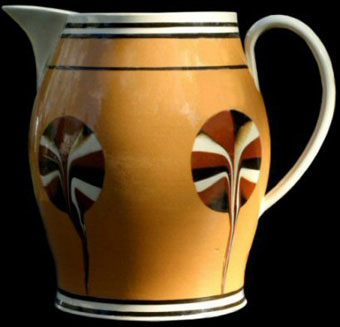2023-4-16
骨瓷和純白釉之後,英國陶瓷業,似乎已經進入了死胡同。但是十八世紀英國一個不起眼的墨珈藝術陶,使兩百年後的英國陶瓷,起死回生,煥發青春,並絢麗多彩,這多少還得益於英國陶瓷的低調和鄉土氣息,以及美洲新大陸經濟文化繁榮和文藝上的復興。
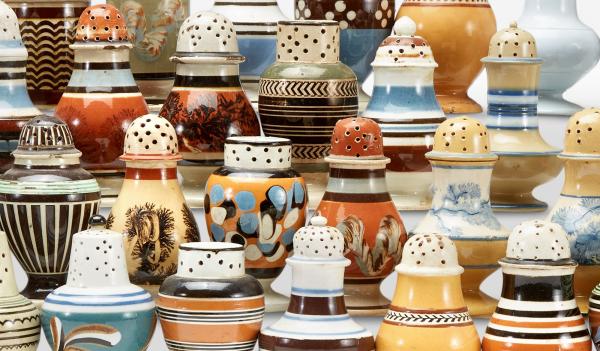
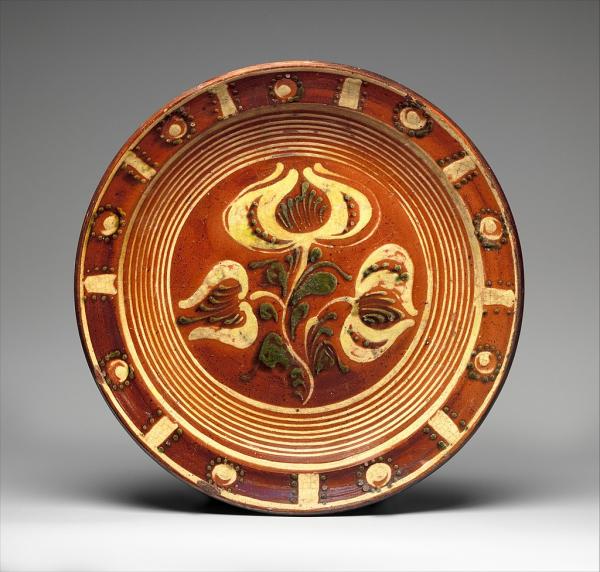
| 十七世紀的美洲紅釉陶: Redware - utilizing red to pinkish clay made as early as the late 1600s by American colonists. Red color due to the amount of iron in clay. | 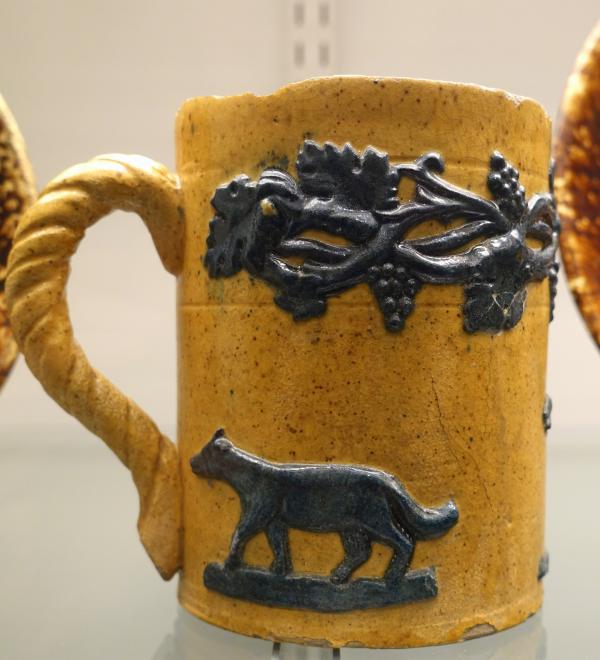
| 十九世紀的北美黃釉陶:Yellowware utilizing buff to yellow-orange clay made between the 1850s to early 1900s in New England, New York and Pennsylvania. Ohio eventually became the center of yellowware pottery manufacturing. | 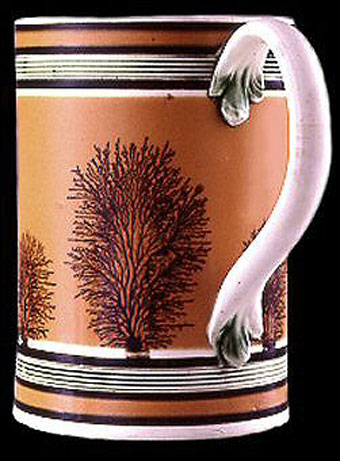
| 十八世紀的英國墨珈藝術陶:Mochaware often referred to as mochaware is a type of dipped ware made in England between 1780 and 1840s for export and was one of the cheapest decorated-ware available. In the old potteries, it was referred to as Mocha or dipped ware. In 1799 it cost sixty percent more than plain creamware. By 1814, it appears on potters' price lists as only twenty percent more, and it stayed that way until the 1840s. |
始於十八世紀中葉的英國墨珈藝術陶,是釉上彩繪陶,是在奶黃釉陶器的外面上,隨意繪上一些以弱酸為介質的含有從非洲進口的墨珈瑪瑙粉的亂七八糟的顏料,包裹茶葉煙草桔皮檸檬尿酸等等,成一定的幾何圖桉和線條,成器主要是茶杯奶杯等立件,很少釉盤子和碟子,價廉物美,粗俗自然,主要是供應英法低端市場和殖民地,最後才登陸北美市場,並融入20世紀以美國為主導的陶瓷裝飾藝術的文化復興。
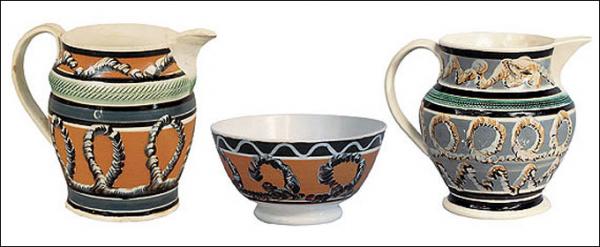
Mochaware was first made by William Adams of the Greengates factory, Tunstall, England (1745-1805). Along with his blue-painted and enameled pottery, it brought Adams significant notoriety. This style of pottery, which could be sold at a moderate price, found considerable favor in some quarters from its very quaintness. It was white or creamware, somewhat rudely decorated with seaweed or tree-like effects, in black or dark brown, on a pale colored zone of pale blue or light brown outlined with narrow bands of dark colors. The name mocha was derived from mukha, a precious stone, a variety of moss agate, found near the town of Mocha, in Arabia. English factories were turning out quantities of mocha, almost always hollowware- mugs and pitchers as opposed to flat pieces like plates.
Mochaware continued to be made by his Adams cousin, William Adams (1748-1831) of the Brick House, Burslem who started a large new factory at Sneyd Green, Cobridge Hall in 1770 and remained here until 1831. Burslem was the center and principal seat of the Potteries in the seventeenth century. It was still being made in the Adams factory as late as 1903. Mochaware was also made in other British factories, among them Bristol and in the Cambrian Pottery in Swansea, South Wales Pottery at Llanelly, Leeds and Hull in Yorkshire, and in Glasgow, Scotland where the common drinking cups, bowls, and mugs were made as early as 1823. The grounds were usually brown, green, or yellow decorated with ornamental rings. Mochaware in classical shapes and distinctive greens and yellows was also made in four French factories after a group of English potters emigrated across the Channel in the early 1800s. A fair amount of French mocha was exported to Louisiana. However, it did not appear in America until later.
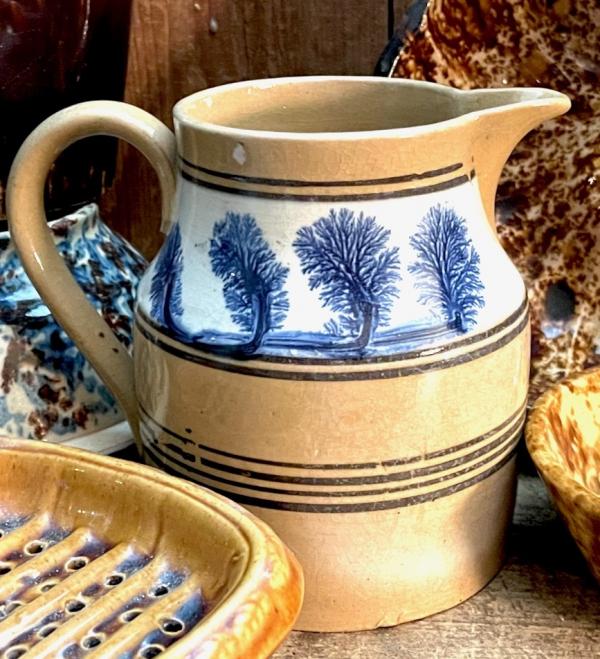
美國版的墨珈藝術彩繪,直接施在黃釉陶器上
The British made a great deal of mochaware specifically for the American market. Large quantities were imported and it was quite inexpensive - very affordable for the average American. American potters started to make mocha ware in the 1850s, almost always on yellowware bodies, banded in black and white. There were American makers in Maryland, Pennsylvania, and Virginia. American made goods with thicker and heavier, with murkier designs. Dating mochaware is difficult because it was never marked by its makers. It continued to be made in this country until the 1930s. It was often used in pubs and common dining establishments. Today it is prized for its unique and highly graphic designs. It is relatively rare and expensive in today's market.
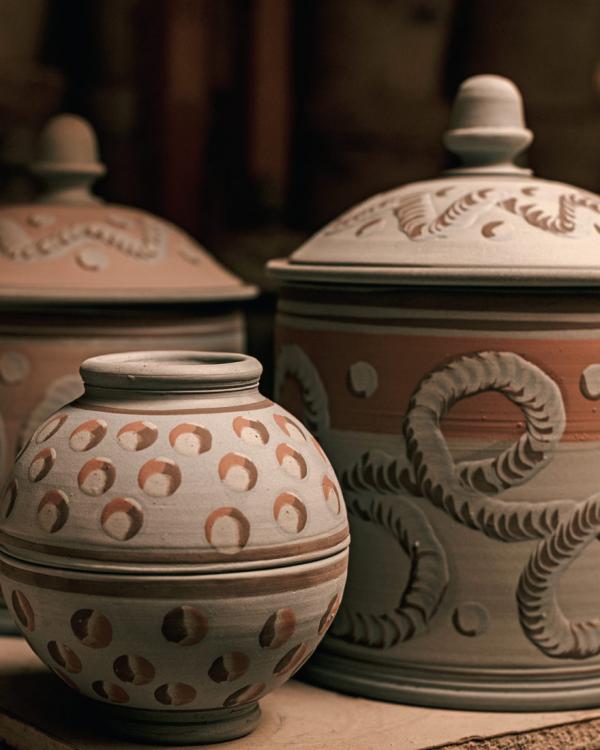
1880-1920年,隨着全球工藝市場的升溫,美國的陶瓷與玻璃廠商開始大量生產裝飾藝術品,這一時期的設計運動融合了高超的手工技藝、自然主義的裝飾傾向及人們對美好家居生活的嚮往,這裡面,墨珈藝術陶居功甚偉。
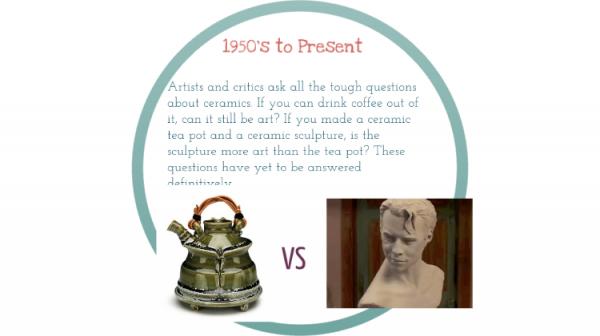
|











